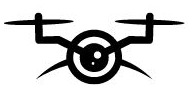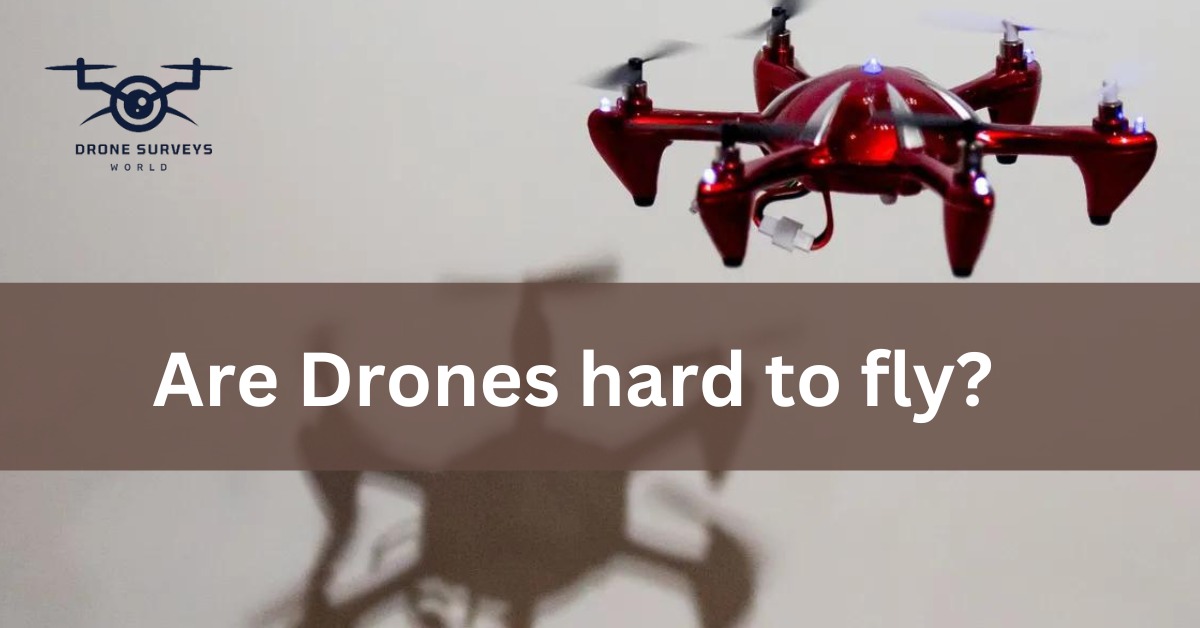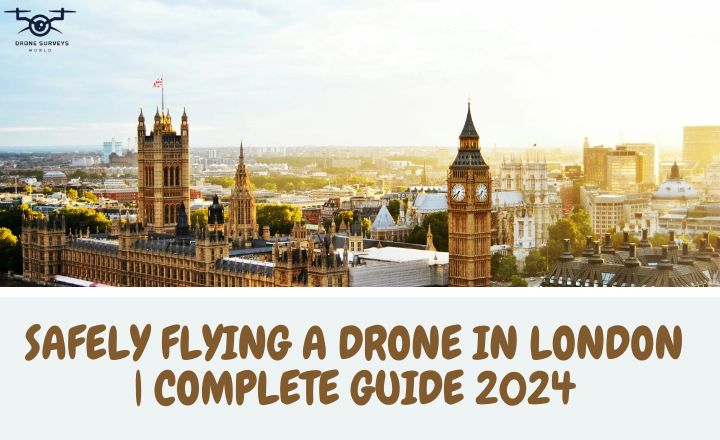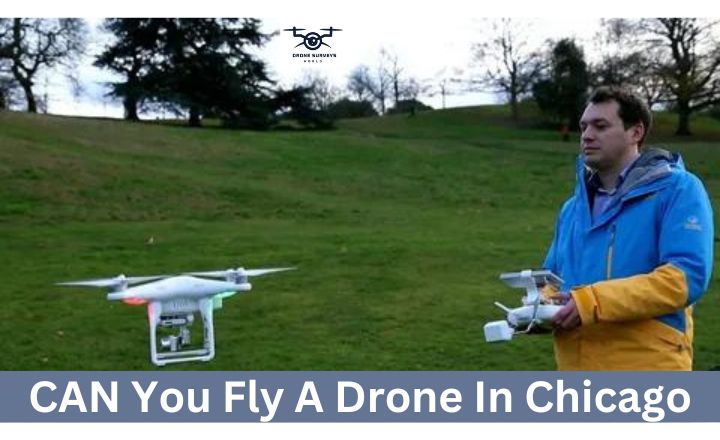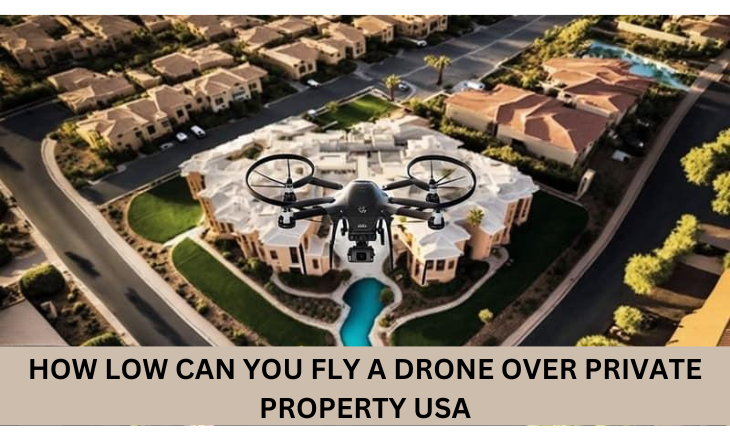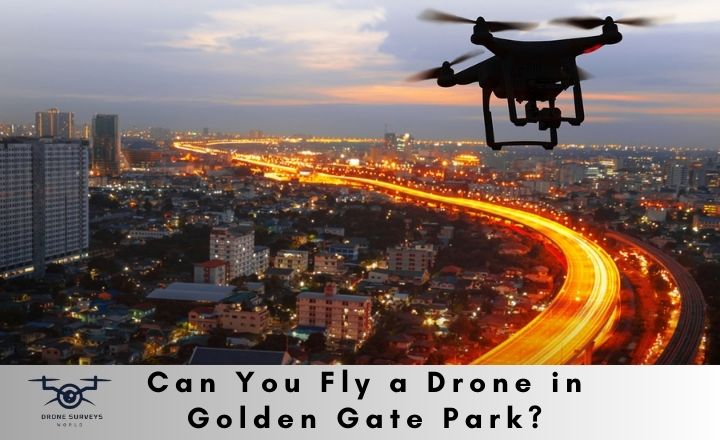You just got a new drone and you’re excited to fly it. But it’s not easy. Flying a drone can be tricky, especially for beginners. Don’t worry, though. Are Drones hard to fly at first because you need to understand the controls, features, and how it handled? You also need to think about the weather and the environment. But with practice and starting with easy models, you can learn to fly drones.
Are Drones Hard To Fly?
Flying a drone well takes skill and precision. Learning to control a drone and understand flight principles can be challenging. It’s more than just pushing buttons; you need to consider wind, altitude, and directions.
With practice and patience, anyone can become good at flying a drone. Starting with a simple drone and moving up to more advanced ones can help you improve. Practice is key, so don’t be discouraged by early struggles – see them as part of learning.
Is Flying A Drone Difficult For Beginners?
Flying a drone can be challenging for beginners. It’s not just about steering it; you also need to consider the drone model, weather, and environment. Each drone model has unique features and handling quirks that you need to understand to master the controls.
The learning curve can be steep, especially with advanced drone models. Don’t let this discourage you. Start with a beginner-friendly model and upgrade as your skills improve.
What Makes Drones Hard To Fly?
Factors such as disorientation, weather conditions, and certain drone models and features can make drones hard to control so don’t make these mistakes. The learning curve and environmental concerns also play a role.
Disorientation
Flying a drone can be hard due to disorientation, especially if you’re not used to interpreting the images on your control screen.
To avoid common mistakes like crashing into objects, it’s important to understand the drone’s perspective. This can be tough for beginners, but learning techniques and safety protocols can help.
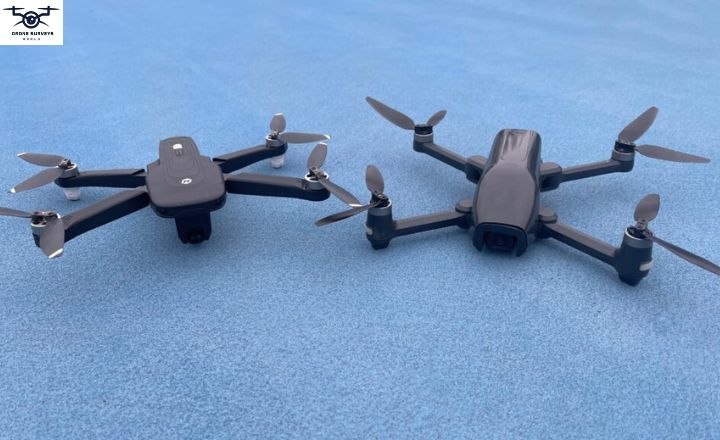
Fly Drone in Open Space
Start by flying your drone in open spaces to avoid obstacles, and gradually learn to use the controls. It’s crucial to keep your drone in sight at all times. With practice, you’ll overcome disorientation and fly your drone with ease.
Weather Conditions
Weather conditions can also make flying a drone harder. Humidity can significantly impact drone performance, leading to reduced visibility and control.
The weather can also affect how well the drone’s camera works. Dust, rain, or fog can make the images blurry or even damage the lens. Wind speed is really important for keeping the drone steady. If the wind is too strong, it can push the drone off course or even make it crash.
High Altitudes
Flying at high altitudes can make it hard to control your drone because the air is thinner. This affects how well the drone can lift and move.
Flying drones in cities is even harder because the weather can be unpredictable. Buildings can make the wind stronger, which makes it even harder to control the drone.
So, it’s really important to keep an eye on the weather when flying a drone.
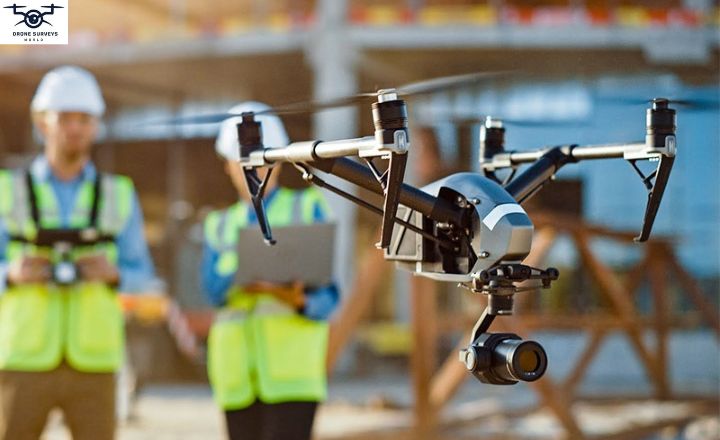
Type Of Drones Hard To Fly:
The type of drone you use can make a big difference in how hard it is to fly. The specific model and its features are important.
- Bigger drones might be more stable, but they need more space to take off and land.
- Smaller drones are more flexible, but they can be hard to control in windy conditions.
- Large drones need more space but are stable.
- Small drones are versatile but may be hard to control in the wind.
- Medium drones offer a balance of size and control.
- To master drone flying, follow regulations, safety rules, and beginner tips for maintenance. Practice and understand your drone’s features to improve.
Learning to fly a drone is challenging due to control complexity, environmental challenges, and understanding your drone’s features.
Overcoming these difficulties involves practicing in different weather conditions and handling drones of various sizes. Safety measures, like maintaining a safe distance from obstacles and following maintenance guidelines, are crucial.
Learn To Fly A Drone
You can learn to fly a drone by watching videos or taking professional courses. To master drone flying, you need to understand how your drone works and be aware of the environment.
- When you fly a drone, the environment can make your flight more difficult.
- Radio interference can cause signal loss, affecting your control of the drone.
- Structures can block the GPS signal, which is important for aerial photography and drone racing.
- Wind tunnels from buildings can make your drone crash.
- You also need to think about drone rules and privacy. Flying in areas with businesses or people can invade their privacy, which breaks drone rules.
So, always be aware of your surroundings and take safety measures when flying a drone.
Common mistakes, like ignoring the drone's battery life or flying it in high winds, can be challenging.
Battery Life Drones Hard TO Fly
Battery life is important for your drone’s flying ability. Understanding drone battery technology is crucial for a good flight experience. Techniques to optimize battery life can make your drone fly longer, but it’s also important to plan for battery capacity.
Advanced battery management systems can help you monitor the battery level, so you can land the drone before the battery runs out. Proper battery charging techniques are also important to keep your drone flying well.
Different Levels OF Drone Difficulty
Yes, drones have different difficulty levels which means Drones are hard to fly at different levels, ranging from full manual control to full automation. With no automation, you have complete control over the drone’s movements.
As the levels increase, the drone becomes more autonomous, which can make flying easier or harder depending on your skills and preference.
Level 0 Drones
Level 0 drones have no automation, making them the most challenging to fly as they require 100% operator control. Manual control has many disadvantages, including a higher risk of operator error, more potential for crashes, and more difficult maneuvering.
With practice, you can become an expert pilot. It is important to practice, start slow, learn the controls, and gradually increase your flight complexity. Also, be aware of common beginner mistakes like flying too high or too fast.
Level 1 Drone
In Level 1 drone operation, there is more automation to make flying easier. Features like gyro sensors and a return home button help you control the drone better and avoid beginner mistakes. It’s important to keep the drone in sight at all times for safety. Here are some tips for flying drones:
Stay within sight of the drone and use the return home button to bring it back safely. Training programs can help you learn to fly Level 1 drones better. With practice, you’ll become a skilled drone pilot in no time.
Level 2 Drones
Level 2 drones are a step up from basic automation. They are more complex and give you more control and safety features. You need good pilot training to operate them safely. These drones can detect and warn about obstacles, and you need to use the right flying techniques.
They must stay within your sight, following drone rules. Level 2 drones require more from you as a pilot, but they also do more.
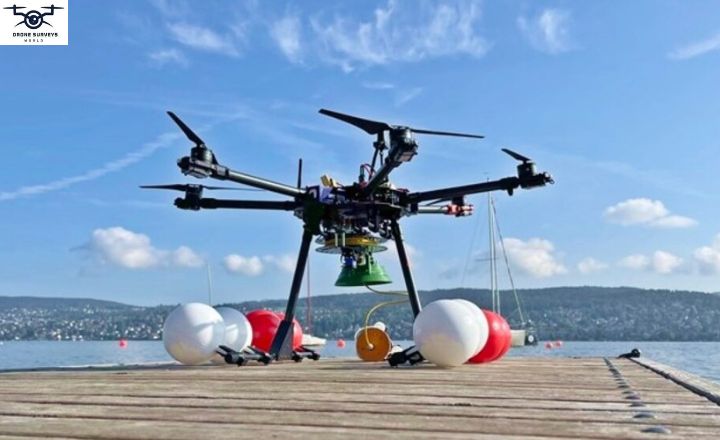
Level 3 Drones
Level 3 drones offer a mix of manual and automated control. Despite their advanced technology, there are still risks. Training programs are important for navigating these complexities, and safety regulations are in place. Level 3 drones have high autonomy but limited safety.
They require both manual and automated control and training. With these drones, you can enjoy flying with backup control, but always follow safety measures and stay updated on regulations.
Level 4 Drones
Level 4 drones are very independent and need more skill to operate. Pilots may need training to make sure they follow safety rules. These drones have advanced features like better obstacle detection and can fly without GPS.
Even though they are more complex, one pilot can control many drones once they know the rules. At this level, it’s important to understand the responsibility of flying these advanced machines, rather than just how hard it is to fly them.
Level 5 Full Autonomy
At Level 5 Full Autonomy, drone difficulty levels no longer require hands-on control. Instead, it’s about understanding and managing advanced technology. This level focuses on the benefits and challenges of autonomous systems.
Autonomy improves efficiency and eliminates human error, but it also raises ethical considerations and safety concerns. The future implications of full autonomy are uncertain, so it’s important to weigh the benefits against the challenges. Your success in flying future drones depends on your understanding of this technology.
How Can Beginners Learn TO Fly Drones Safely?
Beginners can learn to fly drones safely by understanding the controls and following safety protocols. Practicing basic and advanced flying techniques while meeting legal requirements will help you fly responsibly.
Control System
Before flying a drone, it is important to learn the control system. Start with small movements and gradually increase to sharper ones to overcome disorientation.
Focus on mastering flying maneuvers and remember that the controls switch when the drone is facing you. With practice, you’ll get the hang of it.
Safety Protocols When Drones Are Hard TO Fly
Follow safety protocols when Drones are hard to fly. This means obeying flight restrictions, avoiding flying over groups of people or near airports, and keeping the drone within sight and below 400 feet.
It is a good idea to get a drone pilot certification, even for beginners, to learn emergency procedures and protect yourself and others.
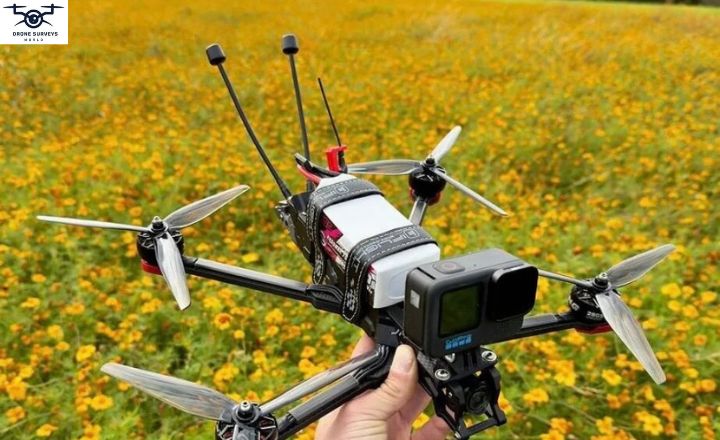
Basic Flying Techniques
Practice basic flying techniques to become a skilled and safe drone pilot. Start with simple maneuvers and gradually progress to more complex patterns. Take your time, be patient, and practice regularly to avoid common mistakes.
Hovering:
To get started with flying a drone, first practice hovering to understand balance and control. Then, practice flying in different directions like left, right, forwards, and backward. Once you’re comfortable, start flying in patterns to improve your control skills.
After mastering the basics, learn seven advanced flying techniques to significantly improve your drone piloting skills. It’s important to consistently practice these advanced maneuvers to become a skilled drone pilot.
Consider The Following:
Understand and follow airspace regulations, such as not flying above 400 feet or near airports without permission. If you’re flying commercially in the U.S. you need to pass the FAA’s Part 107 certification. Consider getting drone insurance to protect yourself financially in case of accidents.
Understanding flight restrictions and prioritizing safety is also crucial.
Conclusion
Drones are hard to fly at first, but with practice and training, anyone can learn to operate them well. Easy-to-use controls and advanced features have made flying drones easier for everyone. It is important to understand how drones fly, is flying a drone hard and follow safety rules when using them. By learning the rules and being responsible, anyone can have fun flying a drone. Whether you’re new to flying or have experience, take the time to learn how to fly drones for fun or work.
Frequently Asked Questions
How Difficult is it to Control An FPV Drone?
It can be challenging at first, but with practice, you can become proficient in controlling the movements of an FPV drone.
How Hard is it to Get a Drone License?
The difficulty varies from person to person, but with proper preparation, many find success.
How Hard is Drone Pilot Test?
The difficulty of the drone pilot test can vary depending on individual preparation and experience.
Are FPV Drones Hard to Fly?
Yes, FPV drones tend to have a steeper learning curve due to the first-person view perspective.
